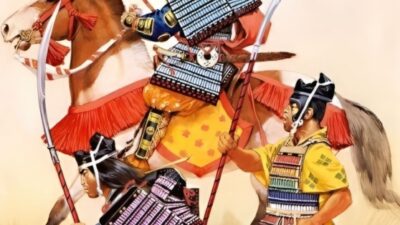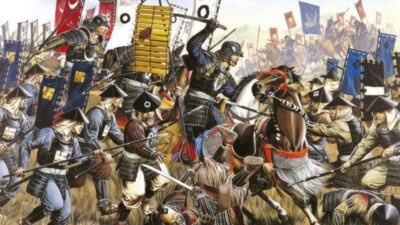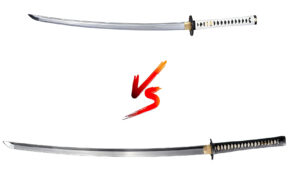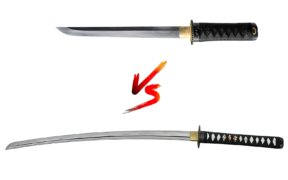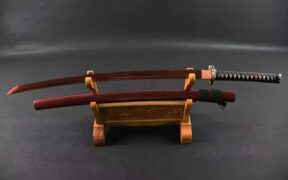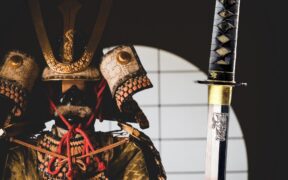Uchigatana vs Katana: What are the Main Differences?
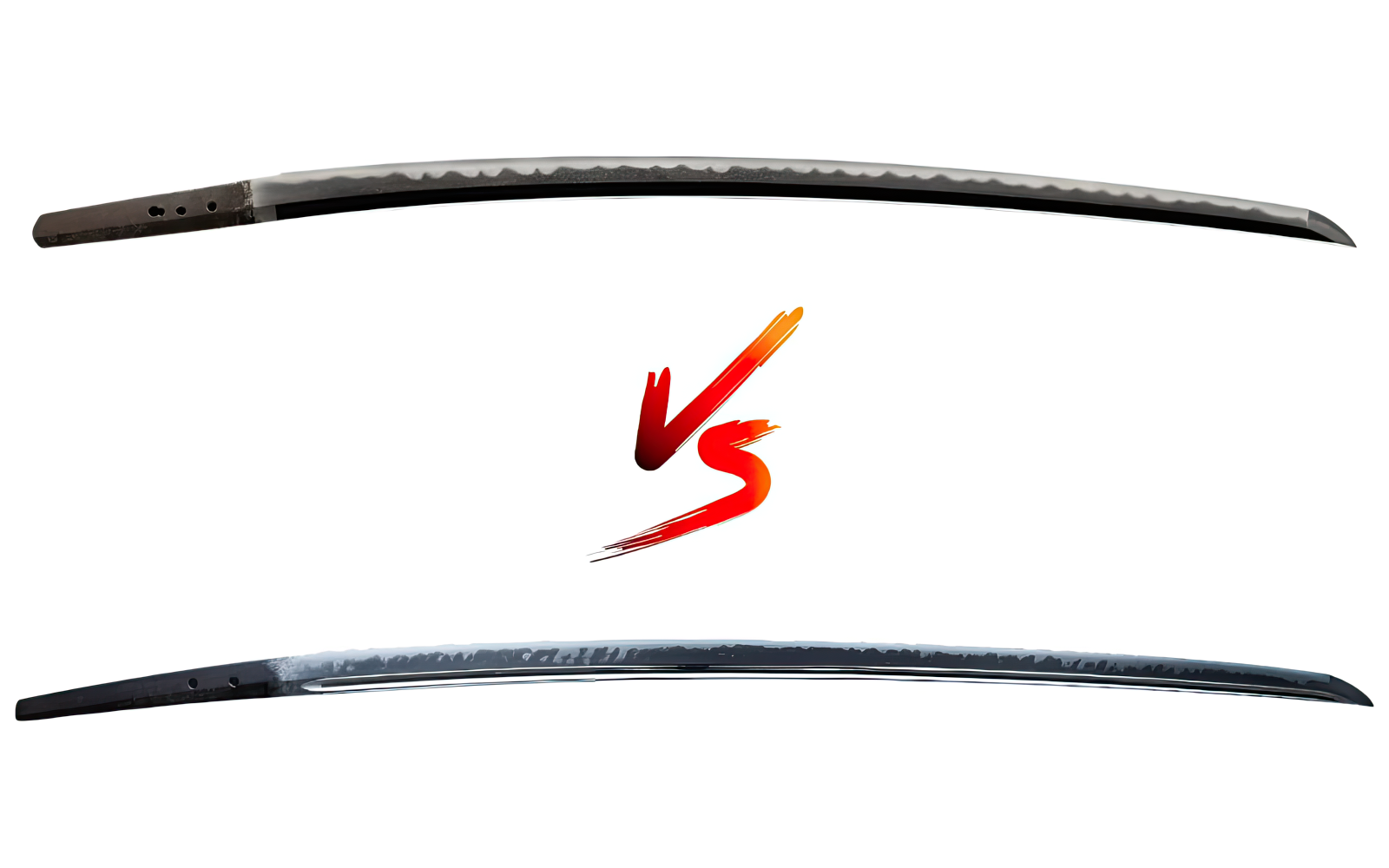
The uchigatana and katana are well-known Japanese swords featured in anime such as Bleach and Samurai Champloo, TV shows such as Shogun, and video games like Elden Ring. However, the names of the two swords commonly cause confusion.
In this article, we’ll clear up that confusion. We’ll start by explaining what these swords are called in Japan and around the world. Next, we’ll talk about their key features and their role in battle. Finally, we’ll dive into their history and see which one comes out on top in a duel.
Terms & Meaning Explained
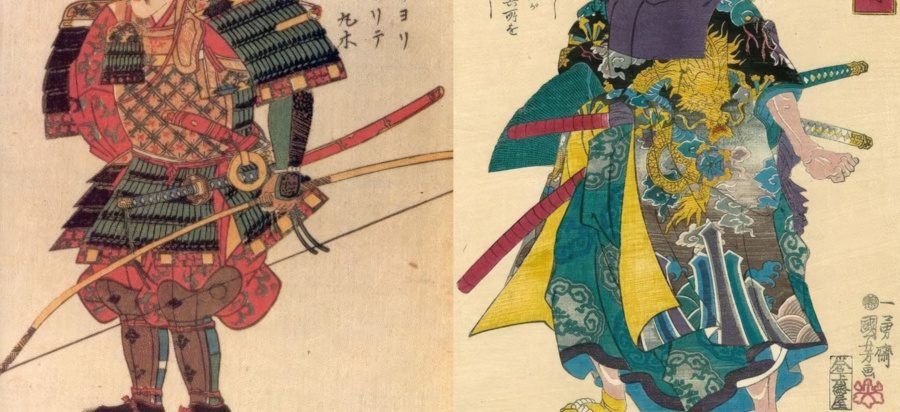
Uchigatana in Japanese is translated to “striking sword” and refers to the blades carried in an edge-pointed-up fashion inside the obi belt starting in the late Heian Period (8th-12th century CE). It was used to mark certain types of fittings for bigger swords like the tachi and the katana.
In Japan, katana means “sword” and can refer to any single-edged blade. This includes traditional swords, those designed for horseback (tachi), and even practice swords (iaito).
Outside Japan, katana often means the slightly curved swords that first appeared during the Muromachi Period (14th-16th century).
Design and Size Differences
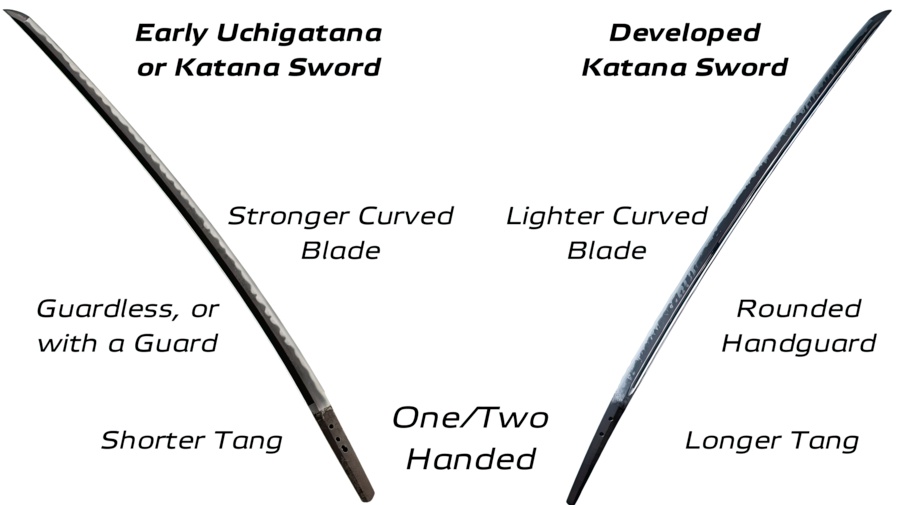
Both the uchigatana and katana are made from tamahagane steel, which is a high-carbon material crafted from iron sand into a sharp blade. The uchigatana is shorter and lighter than the katana.
They share many features, such as a single-edged blade, the distinctive hamon pattern from clay tempering, and layers of jigane from folding the metal. Their parts are secured with a single bamboo peg called a mekugi.
Blade

Uchigatana blades often have a stronger curve near the tip, reflecting their time alongside the curved tachi. They have a shorter nakago (full-tang) since early uchigatana were designed for one-handed use. Their shinogi (ridge line) is also more pronounced.
The katana features a gentler curve, which is better suited for foot soldiers. Its full-tang is longer, fitting two-handed grips, and the blade may include a hi (groove) for looks and to make it lighter.
Hilt
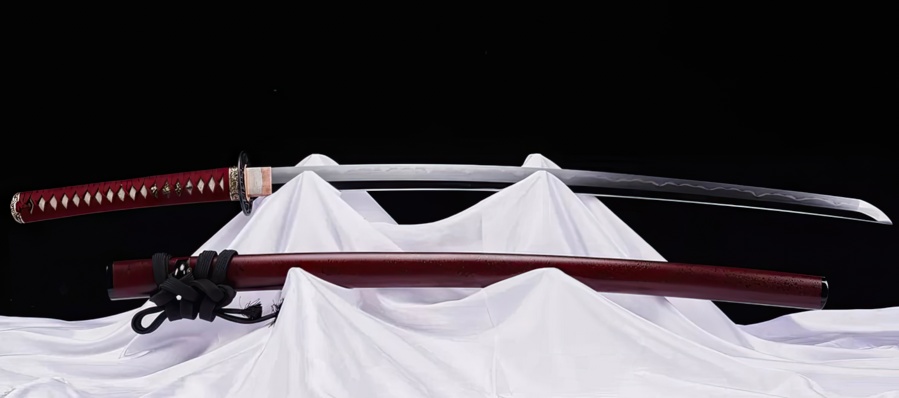
Early uchigatana swords were made for one-handed use. As they evolved into the katana, they were designed for two hands. Their fittings, known as koshirae, could be simple and guardless (aikuchi) or have a rounded guard (tsuba). Initially, uchigatana handles were plain and lacked decorations.
The katana’s handle is longer and often decorated on the guard with metal fittings (menuki) on the handle or the pommel (kashira). Its grip is covered with textured ray skin and wrapped in a smooth cord (ito) made from cotton, silk, or leather.
New Combat and Fighting Techniques
The uchigatana, Japan’s first short sword, introduced a special way of drawing the sword that changed samurai fighting skills.
The katana is key for duels, self-defense, and battles. It’s quick to draw and great for powerful slashes. The katana’s longer length helps with a variety of attacks like cutting and slicing. Using both hands adds strength, and the long blade makes the first strike very effective.
The katana works well as a main or backup weapon for soldiers on foot or horseback, and its guard (tsuba) keeps the hands safe. Meanwhile, the uchigatana’s smaller size makes it easier to handle in close quarters.
History of Development and Warfare
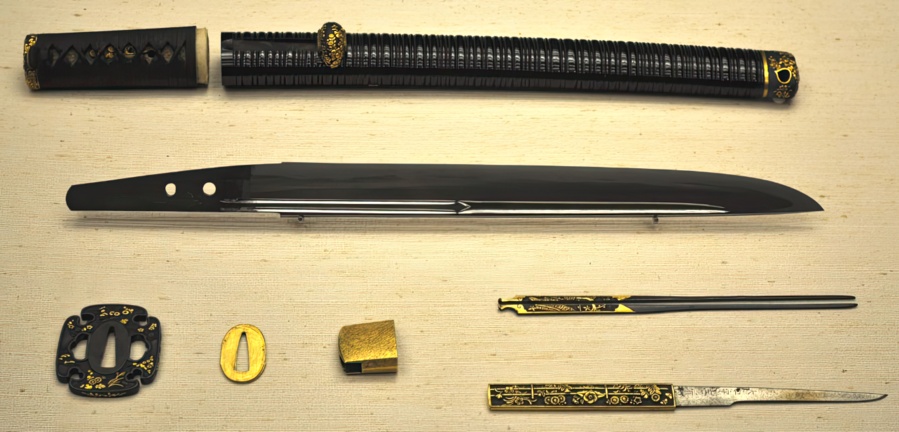
The katana, developed from the uchigatana, greatly changed samurai weapons. Over time, it became more than just a weapon for fighting. It represented the spirit of Japanese warriors. It was used in ceremonies, training, battles, and for everyday self-defense.
Uchigatana
The uchigatana style of carrying swords was ignited by a tanto (dagger) called sasuga. This appeared as early as the Heian Period. It spread to larger weapons such as short swords during the Kamakura Period (12th-14th century CE) and was used by infantry in significant battles such as the Genpei War (12th century CE).
With the rise of close-quarters combat after the Mongol Invasions (13th century), the uchigatana became larger and longer. It was very convenient for samurai infantry to carry.
Katana
The katana appeared in the Muromachi period (14th-16th century), evolving from the smaller uchigatana. It was often carried alongside other weapons like bows, spears, and rifles. This larger blade could serve as the main weapon when necessary.
British historian Stephen Turnbull, an expert on Japanese military history, notes, “The main weapon was the straight-bladed spear. The familiar scene of a samurai facing his opponent with a sword mainly occurs off the battlefield, in situations like revenge killings or duels.”
The katana became crucial in many battles in the Sengoku Jidai (16th century). During the peaceful Edo Period (17th-19th century), the uchigatana evolved into the katana. It was loved for its usefulness in close fights and its signature way of being carried, which shaped samurai sword fighting.
Cultural Significance and Modern Perceptions
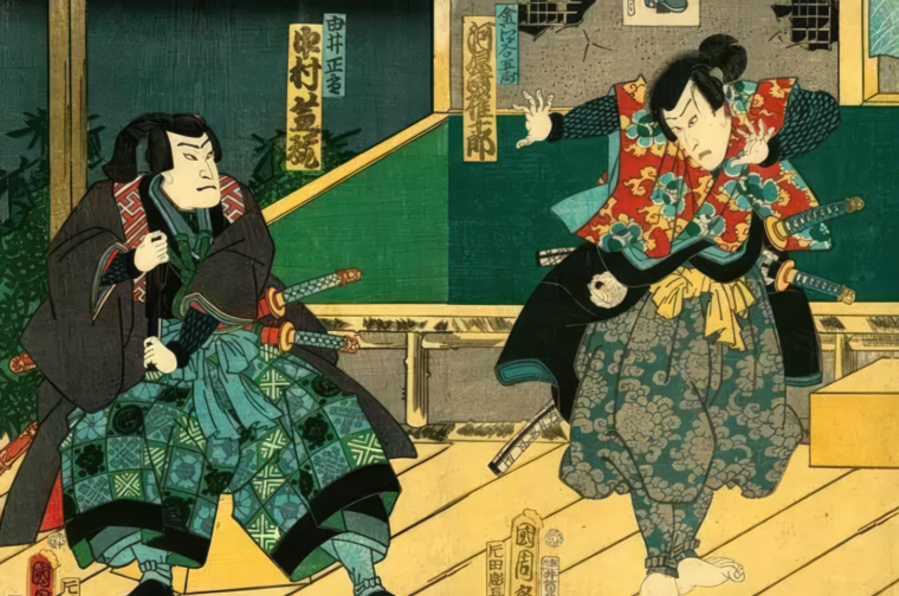
The katana essentially replaced the uchigatana. In the peaceful Edo Period (17th-19th century), it became a subject of many legends, samurai tales, and works of art, reaching an almost mythical status.
In Japan, the katana, also known as the uchigatana, has become a cultural symbol. These swords are often seen in modern anime, TV shows, and video games. For example, in Elden Ring, the uchigatana is portrayed as a quicker and shorter weapon, while the katana is more powerful but slower.
Conclusion & Duel Winner (Uchigatana vs Katana)
Some see the katana as an evolved version of the uchigatana, designed for use with two hands and much larger in size. Its size gives it a reach advantage in duels against the earlier uchigatana, leading to a decisive win in an unarmored duel.
